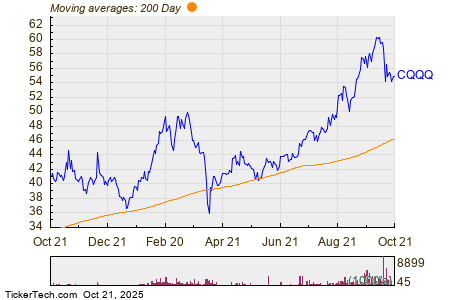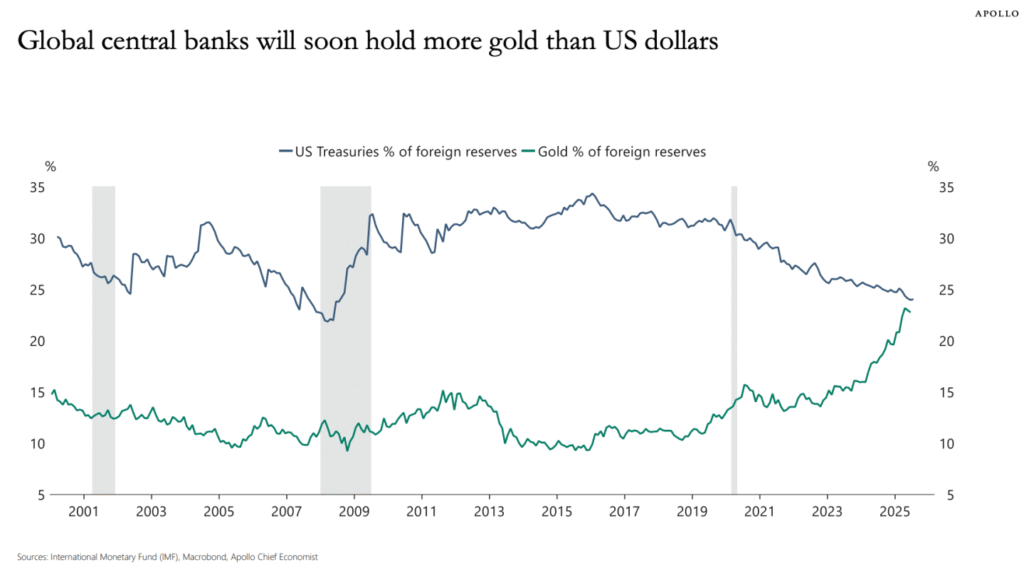
Artificial intelligence (AI) is the new currency of global power, and China is amassing it at scale.In 2017, China declared its ambition to become the world’s leading AI power by 2030 and has pumped in billions, spurring domestic innovation. Between the state and the private sector, the country is projected to spend nearly $100 billion (€85.76 billion) on AI in 2025 alone.So far this year, China has stunned the global tech community with the rise of DeepSeek, a startup whose large language model (LLM) rivals top Western brands like ChatGPT and Grok. DeepSeek delivers mostly comparable performance at a fraction of the cost and computing power.E-commerce giant Alibaba, meanwhile, has launched a powerful new AI model and announced plans to build more data centers around the world, showing that China’s biggest tech firms are serious about challenging US AI dominance. Tencent added fuel to the race this year with its release of Hunyuan-A13B, an AI model designed to be faster, smarter and open to developers.Together, these breakthroughs reflect how the major players in China’s AI ecosystem , startups, tech giants and the state are mobilizing to close the gap with the West. Jensen Huang, CEO of the world’s largest chipmaker NVIDIA, has warned against complacency, saying the US is “not far ahead” of China in the AI race. Huang also noted in the interview with CNBC earlier this month that Chinese society is “very quick at adopting new technology.”
How China is bridging the AI gap
With over a billion people online, China’s huge population acts as a built-in testing ground, allowing new AI products to scale rapidly among consumers, services and industries. As Chinese models are also designed to run on cheaper hardware, they’re far more cost-efficient to deploy.“China is now moving at the same speed as the US,” Pedro Domingos, a computer science and engineering professor at the University of Washington, told DW. “They’ve caught up over the years and are now at the frontier, trying to pull well ahead.”Domingos said there was also a “misconception” that the US had been far ahead in large language models. He noted how China’s efforts, like Baidu’s deep learning group in 2010, were ahead of many US firms.By making powerful models like DeepSeek, Qwen-3, and Kimi K2 open-source, Chinese firms are giving developers free access to cutting-edge tools. Western rivals often keep theirs locked behind paywalls.“American companies used to publish their AI methods openly, driving progress,” Domingos said. “Now they’re secretive for competitive reasons, which is unfortunate for innovation.”China watchers have noted the intense competition among Chinese AI firms. By this past July, they’d released more than 1,500 large language models, Chinese state media reported. That’s 40% of the 3,755 models released globally by mid-year.The question now is how many of these startups will ever turn a profit, and could that harm China’s AI ambitions? Beijing has taken note and urged the tech sector to avoid “disorderly” competition.China now boasts 14 out of the global top 20 AI models when ranked on tasks like reasoning, knowledge, math and coding skills, according to OpenCompass’ LLM leaderboard on October 18, 2025. Although US players still hold the top positions, nine of their Chinese rivals are open-source, versus none produced in Silicon Valley.
China filling void caused by US chip ban
Despite its rapid AI progress, China is still behind on the advanced chips needed to speedily train LLM.US export controls have blocked China’s access to cutting-edge semiconductors and chipmaking tools, forcing domestic firms to rely on older, less efficient hardware.In response, Beijing has banned imports from key US suppliers like Micron Technology and doubled down on building its own chip industry.In a sign of the huge AI investments being made, Chinese NVIDIA rival Cambricon Technologies last week reported a 14-fold surge in quarterly revenue, having achieved a 44-fold rise in the first half of the year. The firm has benefited from the US tech sanctions as China’s AI startups seek local alternatives.The pressure to innovate under such constraints is driving China to find smarter, more efficient ways to scale AI, potentially accelerating its ambition for long-term independence. This is an outcome far from what Washington intended.“US chip export restrictions to China are counterproductive. They incentivize firms like DeepSeek to optimize older hardware, advancing research,” Domingos said, referring to how the Chinese firm built powerful AI models using less advanced chips by finding smarter ways to train them.
US pushes AI frontier, China seeks global markets
The US still leads the AI race in frontier research, figuring out how to build systems that understand language better, follow instructions more reliably and avoid harmful behavior. US tech firms are also exploring advanced AI for images, video and can even make decisions on its own.China is, however, gaining ground in real-world impact and international reach by exporting AI infrastructure and open-source models to developing countries, eager for digital infrastructure. The likes of Alibaba and Huawei are building data centers and cloud platforms across Asia, Africa and Europe, offering cheaper alternatives to US providers.Beijing is also pushing its own AI governance frameworks internationally, aiming to shape global standards according to its national interests. By promoting models trained on Chinese data and values, the government wants to influence how AI systems interpret history, culture and truth itself. This, of course, comes from an authoritarian system where freedom of expression is tightly controlled.As Domingos put it: “Whoever controls the large language models controls the past and the future … Large language models shape reality and China wants models that reflect their version of it.”Robin Feldman, director of the AI Law and Innovation Institute at UC Law in San Francisco, went further, describing the AI race as a “new form of Cold War.”“That war will be won by the country that can develop and maintain the greatest lead in artificial intelligence,” he told US news site Axios.







